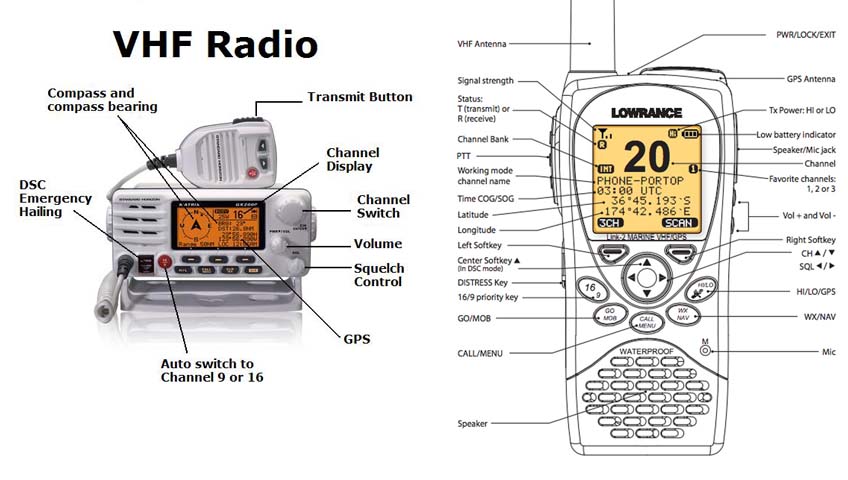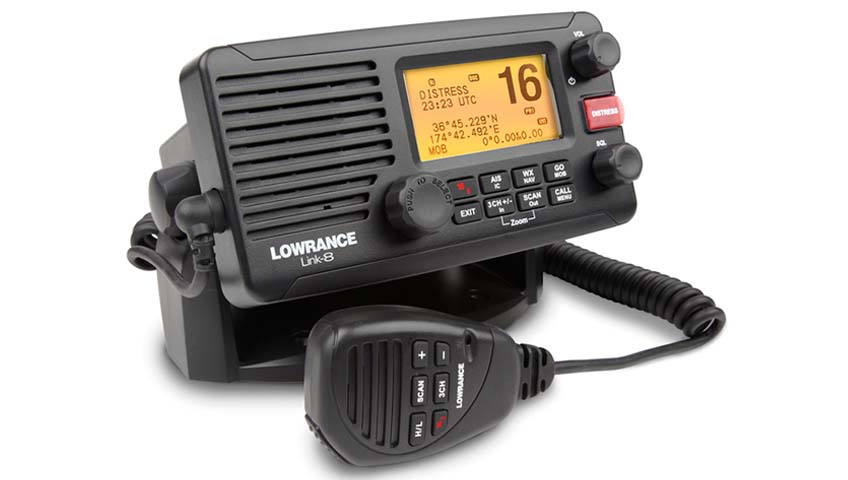Marine VHF radio refers to the radio frequency range between 156.0 and 162.025 MHz, inclusive. In the official language of the International Telecommunication Union the band is called the VHF maritime mobile band.
Marine radio equipment is installed on all large ships and most seagoing small craft. It is also used, with slightly different regulation, on rivers and lakes. It is used for a wide variety of purposes, including summoning rescue services and communicating with harbours, locks, bridges and marinas, and operates in the very high frequency (VHF) range, between 156 and 162.025 MHz. Although it is widely used for collision avoidance, its use for that purpose is contentious and is strongly discouraged by some countries, including the UK.
A marine VHF set is a combined transmitter and receiver and only operates on standard, international frequencies known as channels. Channel 16 (156.8 MHz) is the international calling and distress channel. Transmission power ranges between 1 and 25 watts, giving a maximum range of up to about 60 nautical miles (111 km) between aerials mounted on tall ships and hills, and 5 nautical miles (9 km; 6 mi) between aerials mounted on small boats at sea level. Frequency modulation (FM) is used, with vertical polarization, meaning that antennas have to be vertical in order to have good reception.
Modern-day marine VHF radios offer not only basic transmit and receive capabilities. Permanently mounted marine VHF radios on seagoing vessels are required to have certification of some level of "Digital Selective Calling" (DSC) capability, to allow a distress signal to be sent with a single button press.


